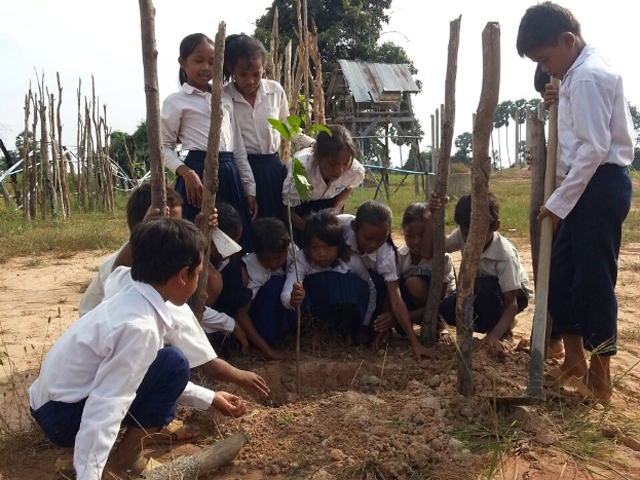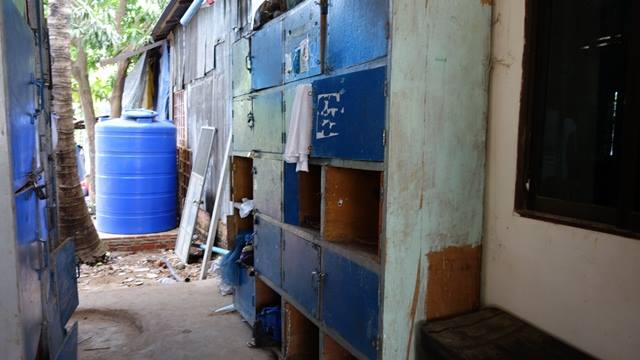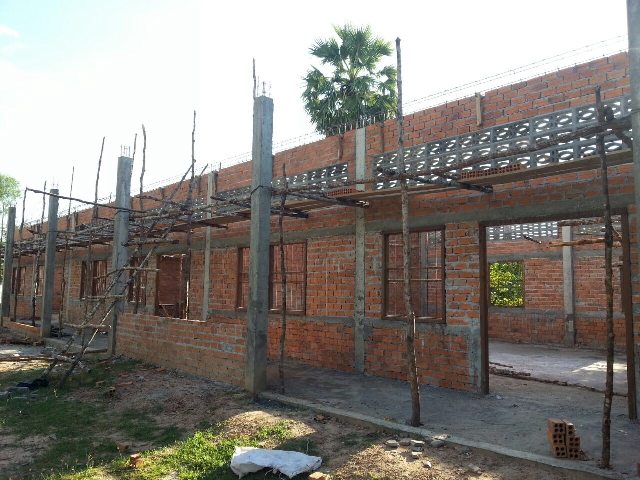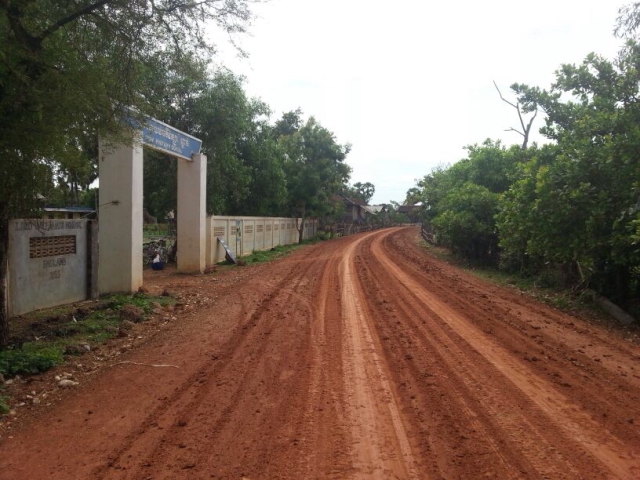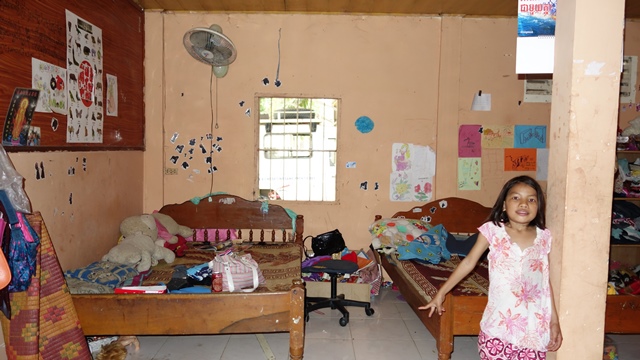Schools that Humanitus is proud to work with in Cambodia
Pichey Rangsey School - Pouk Ressey Village
Makak Primary School - Siem Reap Province
Background
Most Cambodians consider themselves to be Khmers, descendants of the Angkor Empire that extended over much of Southeast Asia and reached its zenith between the 10th and 13th centuries. Attacks by the Thai and Cham (from present-day Vietnam) weakened the empire, ushering in a long period of decline. The king placed the country under French protection in 1863 and it became part of French Indochina in 1887. Following Japanese occupation in World War II, Cambodia gained full independence from France in 1953.
The fate of Cambodia shocked the world when the radical communist Khmer Rouge under their leader Pol Pot seized power in 1975 after years of guerrilla warfare. An estimated 1.7 million Cambodians died during the next three years, many from execution, torture, forced hardships, or starvation. The Khmer rouge were one of the most lethal regimes of the 20th century, effectively exterminating one quarter of the Cambodian population and systematically destroying civic bodies, infrastructure and social networks. The horror of the years of killing is still fresh in many people's minds today.
In December 1978 the Vietnamese invasion drove the Khmer Rouge into the countryside beginning a 10-year Vietnamese occupation which touched off almost 13 years of civil war. After the 1992 paris Peace-Accords Cambodia began the slow process of recovery from decades of conflict.
Today, Cambodians are still recovering from decades of turmoil and civil unrest, rebuilding their economy, clearing land mines and reviving their culture. Poverty continues to be rife; 34% of Cambodians live on less than $1 per day. Rural areas lack access to clean water, electricity and even passable roads in the rainy season. Tuberculosis, dengue fever and HIV threaten the health of the people. And, widespread corruption challenges progress.
The 1990's brought the reinstatement of Cambodia's constitutional monarchy and UN-administered elections but were still riddled with fighting. It wasn't until 1999 that Cambodia finally had peace.
Cambodia's decades of war have also had a major impact on the country's educational system. During the Khmer Rouge regime, teachers and educated role models were killed, schools were destroyed and books were burned. Although new teachers have been trained and schools have been rebuilt, there continue to be a myriad of obstacles that challenge the country's ability to provide access to quality education:
- A shortage of schools and classrooms, particularly in rural areas, limit the number of children who have access to basic education. Although most Cambodian villages have a primary school, many schools are still incomplete, meaning they do not offer a full grade 1-6 curriculum. Getting to a school where students can complete upper primary grades may mean traveling far distances from home, which is not always possible. Access to secondary school becomes even more difficult: only 5.4% of Cambodian villages have a lower secondary school and only 2% have an upper secondary school.[2]
- Poverty forces children to forgo school to support their families' most basic needs. Some families cannot afford the opportunity cost of sending their children to school. The time that their children would spend in class translates to lost time that the children could be contributing to the family income. Common work for Cambodian children includes fieldwork, tending to cows, collecting recyclables, begging, fishing, and construction work. The International Labor Organization estimates that nearly 20% of children ages 5-9 are involved in child labor; the percentage rises to 47% for children ages 10-14 and 34% for ages 15-17. Of the working children ages 5 to 17, only 45% attend school.[3]
- Low compensation forces teachers to collect informal school fees from students creating a barrier to education for poor children. Primary school teachers' government salaries range between $20 and $50 per month, putting them below the poverty line. To supplement their salaries, teachers collect informal school fees from students, usually $0.02 - $0.05 per day. Although this may sound like pocket change, to a Cambodian family with five or more school-aged children, it is a substantial amount of money. So, although the Cambodian government has pledged free education, informal school fees keep many poor children from attending school.
- Poorly trained teachers and high student-teacher ratios contribute to high grade-repeat rates among students. Until 2005, there were minimal requirements for teachers to get a contract position with the government. Many teachers, particularly in remote areas, had not even completed a secondary education. A fast-growing young population meant that establishing minimum qualifications would exacerbate Cambodia's severe teacher shortage. The shortage contributes to high student-teacher ratios, putting 40-50 students in an average-sized primary school class. The combination of poorly trained teachers and high student-teacher ratios contribute to high grade-repeat rates. In Siem Reap province, 12% of primary school students failed to advance to the next grade level at the end of the 2006-07 school year.[4]
- A lack of school resources and little government funding results in insufficient teaching materials and school facilities. The Cambodian government pledges $1.50 - $1.75 per student per year to each primary school for teaching materials and school operating costs. The funding is often insufficient for even the school's most basic needs, leaving teachers to buy things like chalk with their personal money.
Cambodian Statistics: The reality
- Maternal mortality rate - 472 mothers die giving birth per 100,000 live births
- Infant mortality - 66 children die before their first birthday per 1,000 live births
- Under-five mortality rate - 83 children die before they are 5 years, per 1,000 live births
- 44 percent of Cambodian children under five are stunted
- 45 percent of all Cambodian children are underweight
- 2.2 million Cambodian children are living in poverty
- One in eight children dies before their fifth birthday. Most of these deaths are preventable
- 80,000 children have been orphaned by HIV and AIDS
- 53 percent of children complete Grade One to Six at school
Vulnerability of Cambodian Children
Children compromise 50.3% of Cambodias population. Sadly, more than half of these children are malnourished and one in eight will die before the age of five. Many of those who do survive are faced with exploitation and abuse. This group includes orphaned and vulnerable children, street children, children of squatters and ethnic minorities, and children with disabilities. Girls from these groups face significantly increased risks.
Children's Education
While net enrolement in Cambodia has increased, there remain about 180,000 geographically 'hard to reach' primary school age children, of whom 60% are girls who have no access to primary education. Irregular attendance patterns, low (less than 50%) primary school completion rates; and low net enrolment rates for secondary age children mean that vocational and associated literacy programs are critical. Many districts do not have primary schools in their local vicinity. Girls may be prevented from going to school for safety reasons as parents do not want them at risk of attack whilst travelling long distances on their own. Some children do not go to school because they are their family's breadwinner, main caregiver or head of household. the vast majority of ethnic minority children cannot access education because they are unable to speak Khmer among other reasons, such as poverty.



